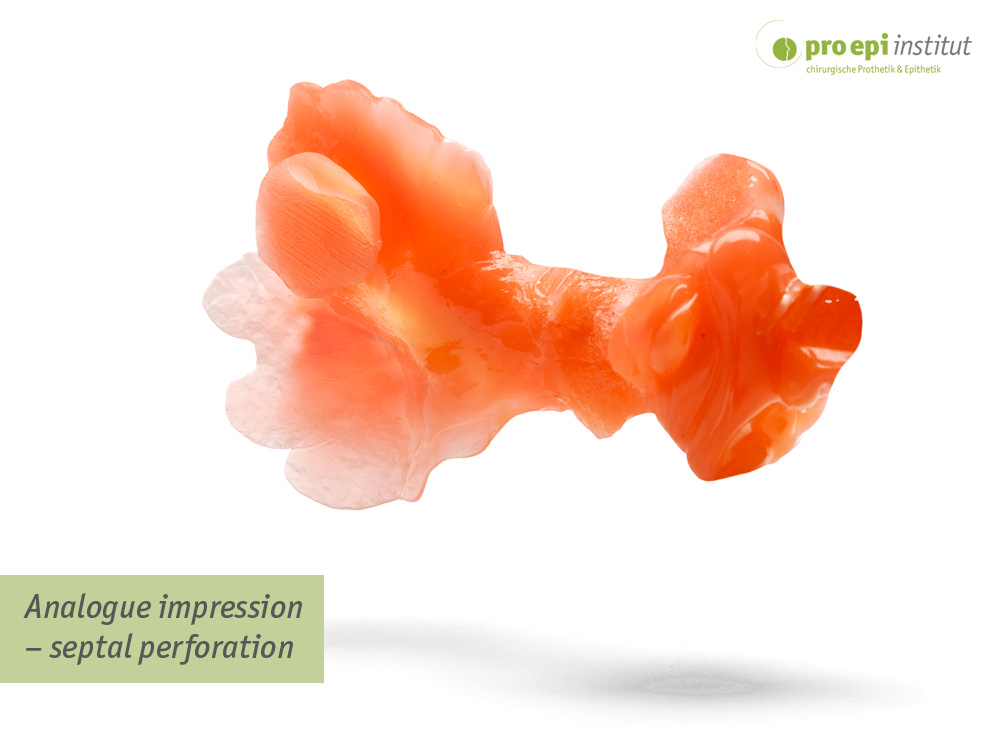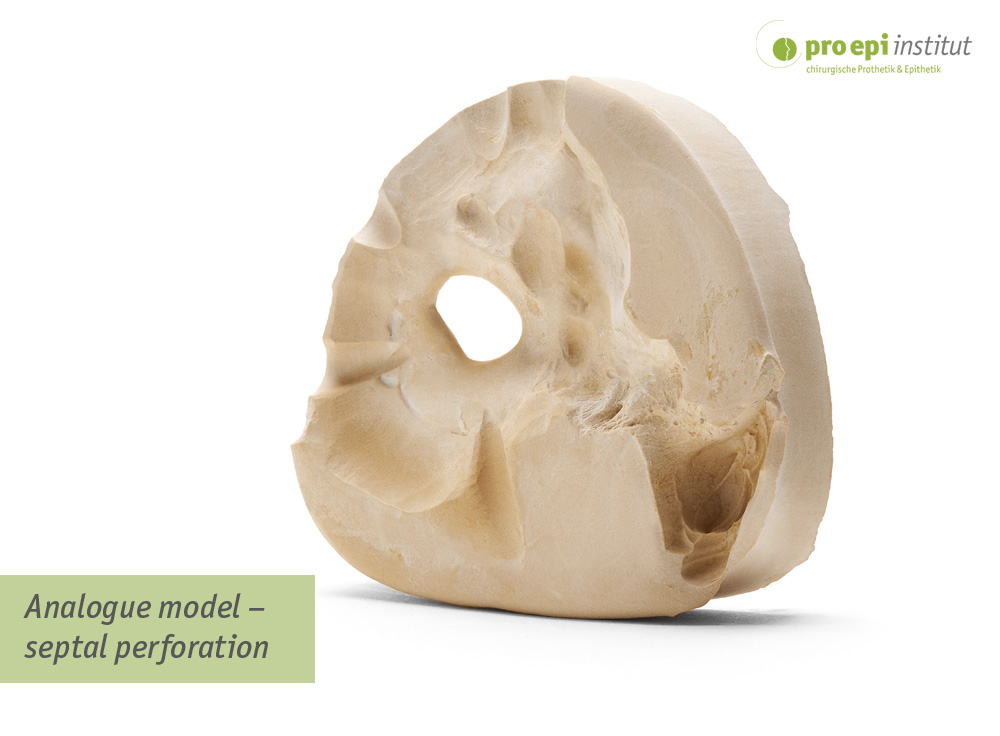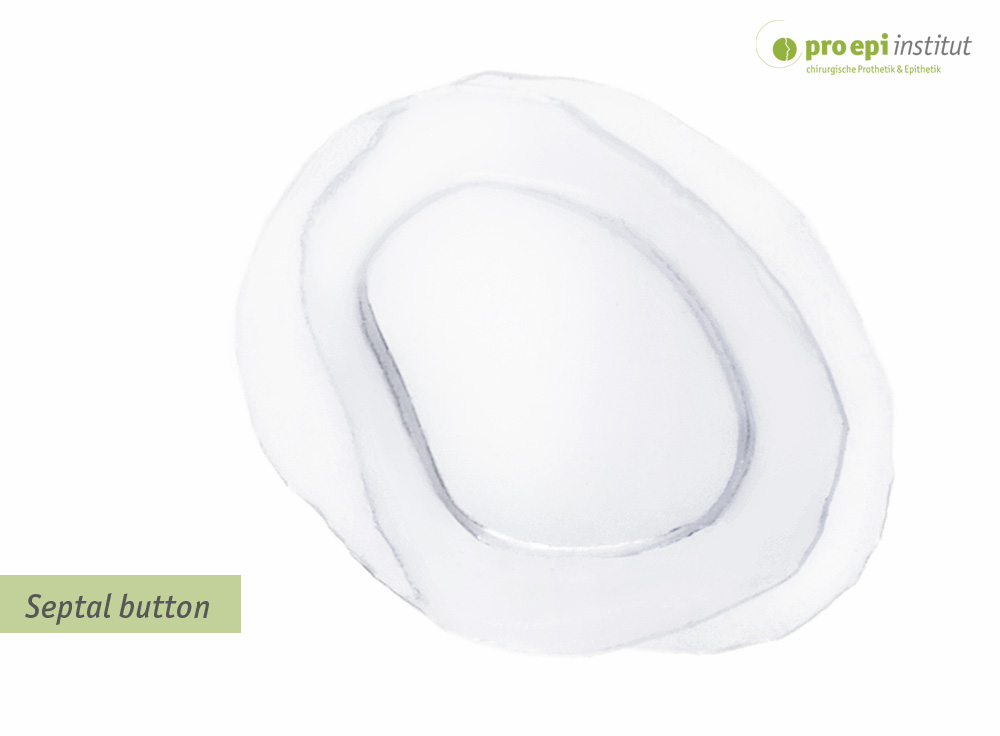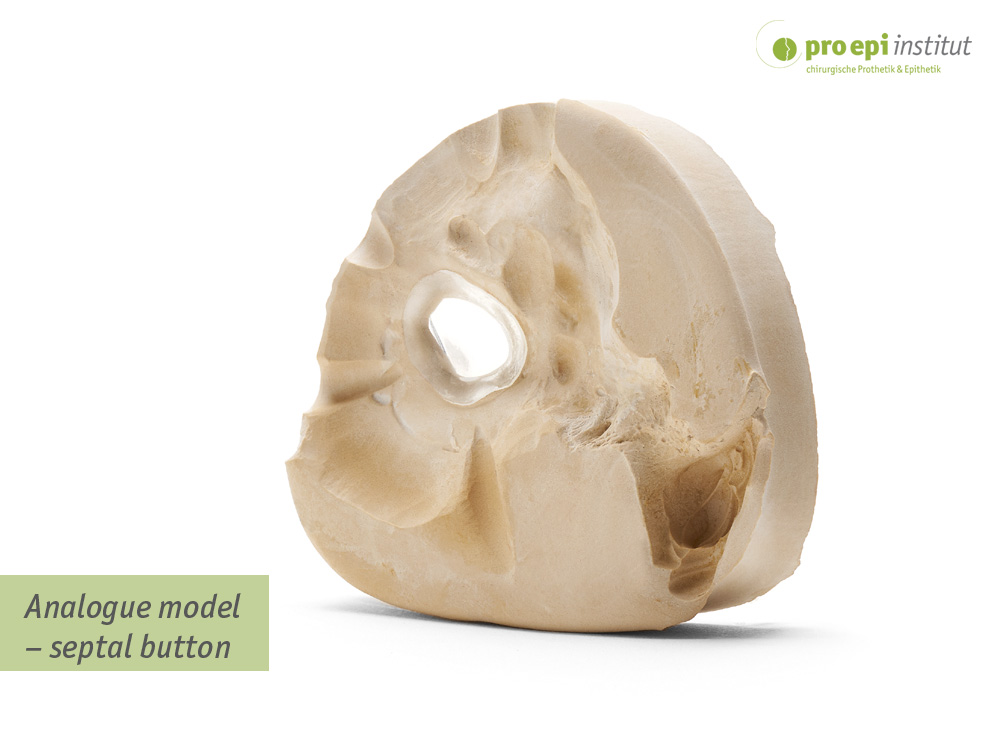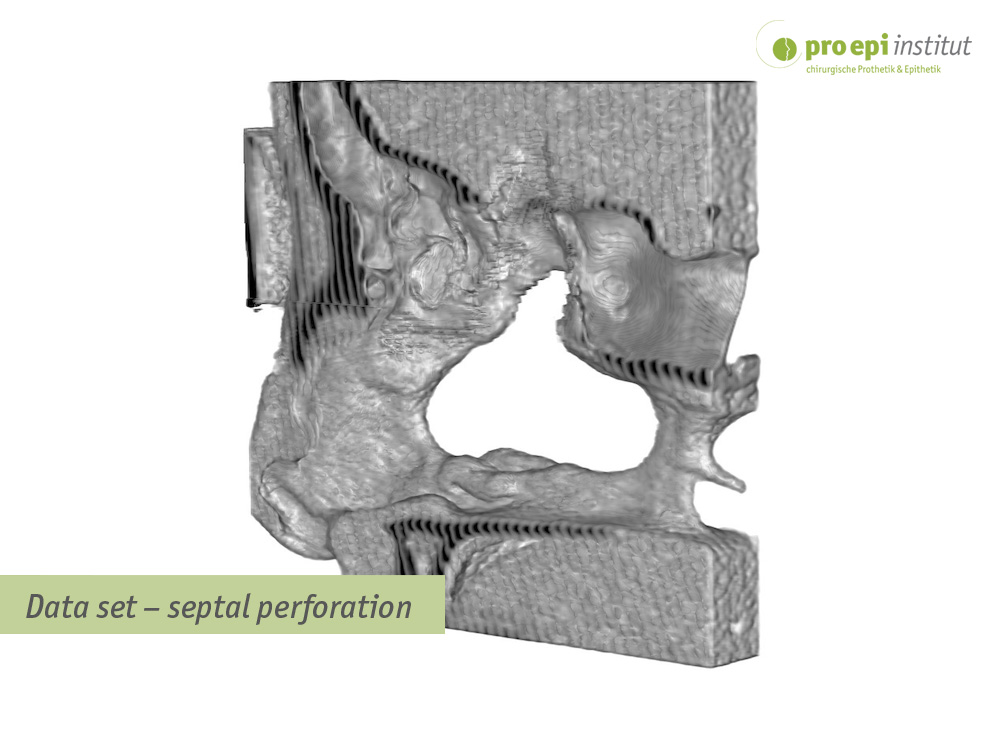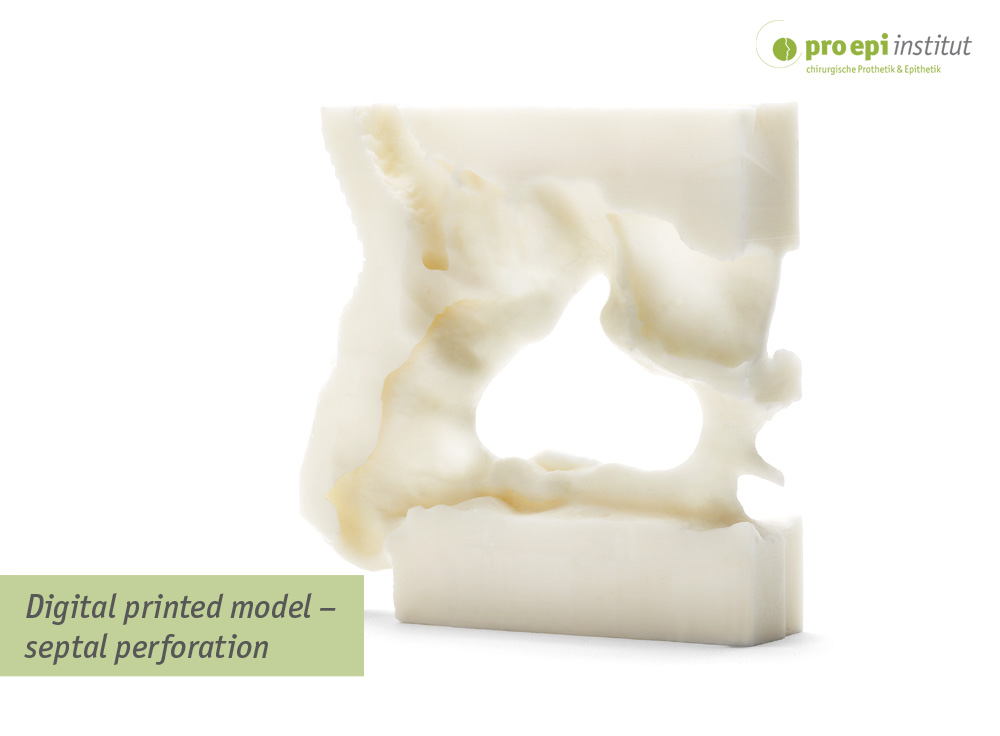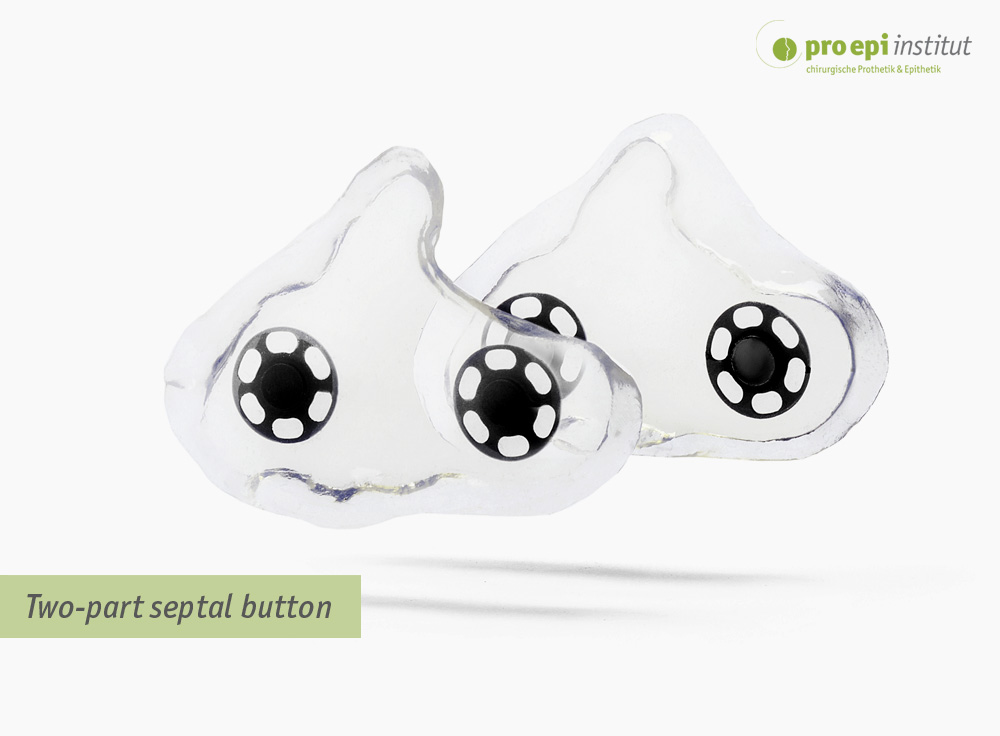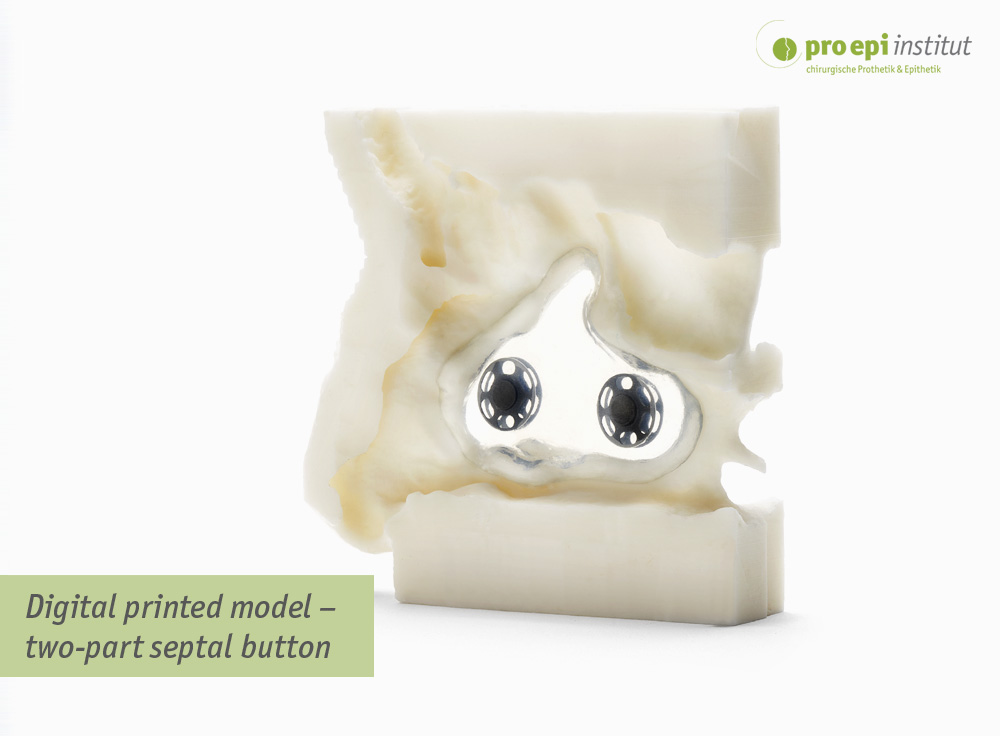Septal perforation / septal button
A hole in the nasal septum can be caused by a variety of factors. Perforation of the septum can often occur as a result of nasal surgery, recurring nasal septal injury (permanent as in nose picking/piercings) or the insertion of an oxygen probe.
This injury affects the cartilage and mucosal tissue on both sides of the septum. Patients with a septal perforation suffer frequent nosebleeds, crust formation on the defect, increases in nasal secretions, air swirls and whistling noises while breathing and potential external deformities of the nose.
If surgery is no longer an option, a custom-made septal button (silicone obturator) may be considered as a treatment method. These are devices that are both delicate and gentle on the skin. They are inserted into the nose through the outer nasal passages and placed in the perforation. They form an almost seamless seal with the mucosa, create laminar air circulation and restore the normal physiological function of the perforated nasal septum, i.e., division of the two nasal cavities. This eliminates air swirls during breathing.
It is relatively easy to make a septal button nowadays. It is generally easier to make analogue impressions to treat smaller perforations.
However, analogue impressions pose considerable problems for large perforations. This can be remedied by using digital imaging techniques such as MRI, CT and DVT X-ray devices, which allow the "impression" of the perforation to be taken without requiring physical contact. This detailed, diagnostic imaging achieves an excellent, digital and three-dimensional data set that can be used to make a customised septal button.
